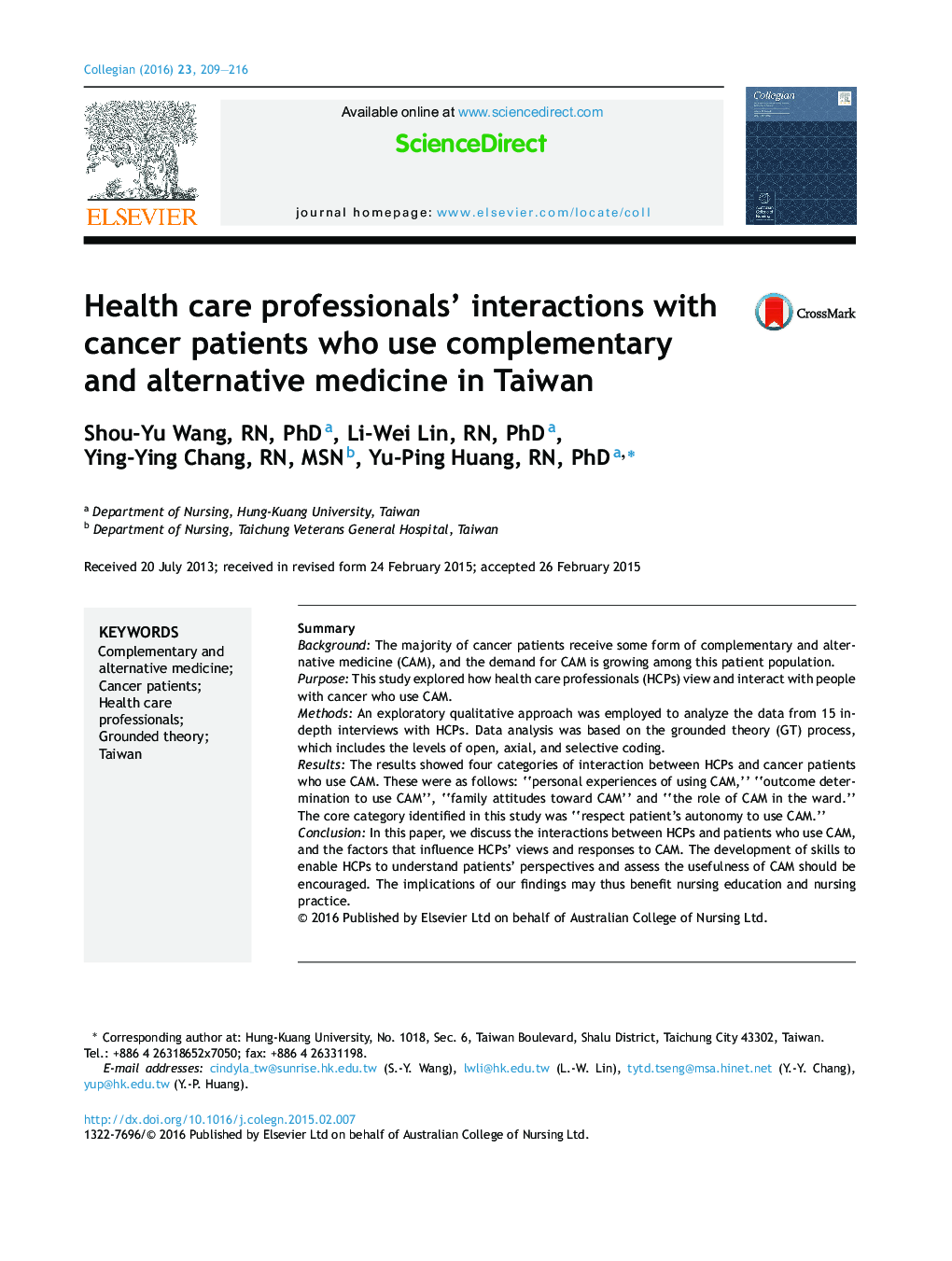| Article ID | Journal | Published Year | Pages | File Type |
|---|---|---|---|---|
| 2646075 | Collegian | 2016 | 8 Pages |
SummaryBackgroundThe majority of cancer patients receive some form of complementary and alternative medicine (CAM), and the demand for CAM is growing among this patient population.PurposeThis study explored how health care professionals (HCPs) view and interact with people with cancer who use CAM.MethodsAn exploratory qualitative approach was employed to analyze the data from 15 in-depth interviews with HCPs. Data analysis was based on the grounded theory (GT) process, which includes the levels of open, axial, and selective coding.ResultsThe results showed four categories of interaction between HCPs and cancer patients who use CAM. These were as follows: “personal experiences of using CAM,” “outcome determination to use CAM”, “family attitudes toward CAM” and “the role of CAM in the ward.” The core category identified in this study was “respect patient's autonomy to use CAM.”ConclusionIn this paper, we discuss the interactions between HCPs and patients who use CAM, and the factors that influence HCPs’ views and responses to CAM. The development of skills to enable HCPs to understand patients’ perspectives and assess the usefulness of CAM should be encouraged. The implications of our findings may thus benefit nursing education and nursing practice.
